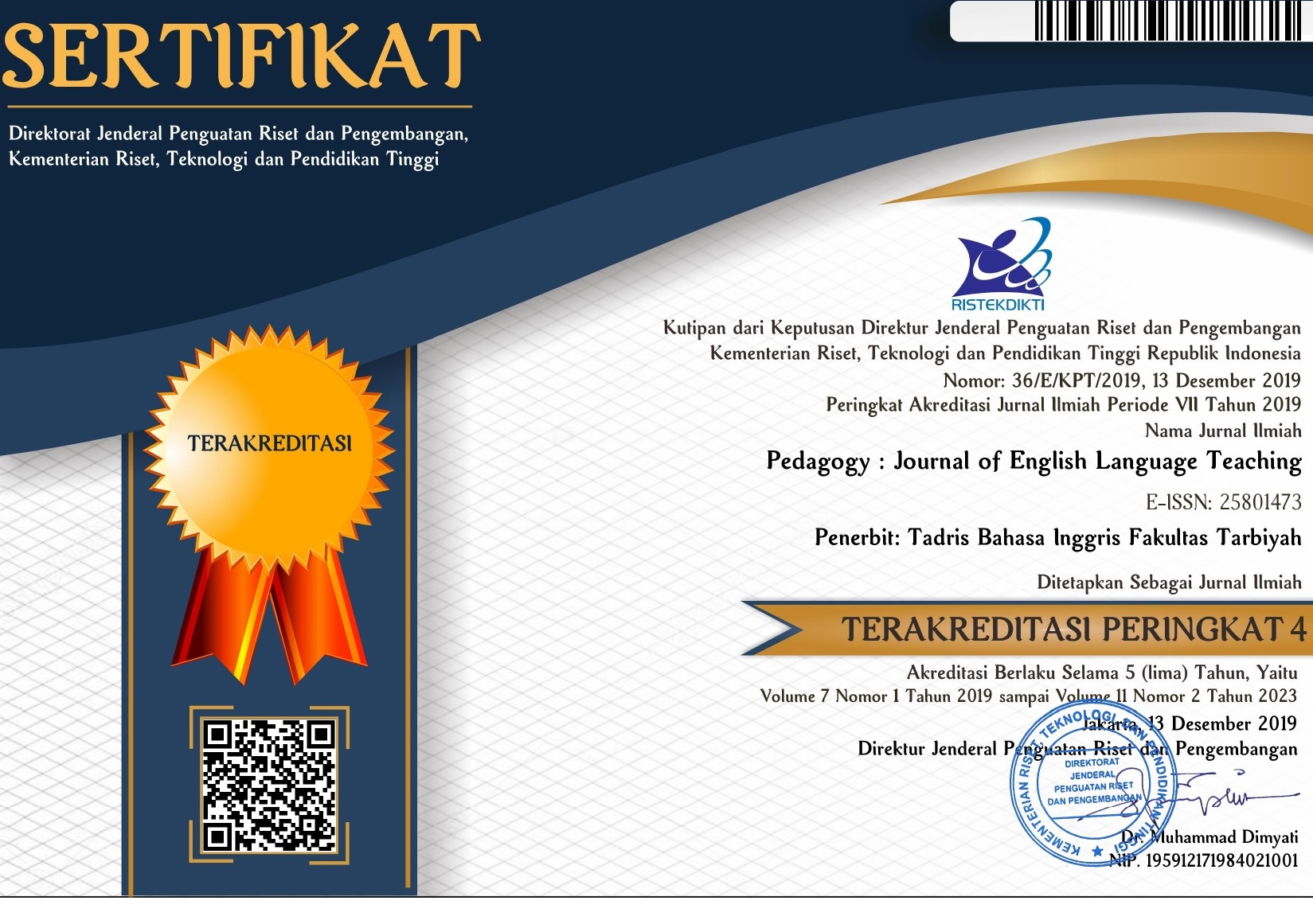Teaching English to Children With Hearing Impairment: A Case Study in Special School
Keywords:
children, hearing impairment, English as Foreign Language, classroom activitiesAbstract
This paper aimed to show the EFL classroom activities for children with hearing impairment conducted by the teacher, the teacher’s consideration in designing and implementing the EFL classroom activities, and challenges faced by the teacher in developing EFL classroom activities. The study was qualitative in nature. The data collected through observation, interview, and documentation. Additionally, this paper applied Miles and Huberman model to analyze the research data through some steps, namely, data reduction, data display and drawing a conclusion. In this research, the researcher observed the teaching process and interview the English teacher for children with hearing impairment at the eighth graders of SLB (Education of physically and mentally handicapped children) Negeri Metro. The results indicated that the teacher designed, and implemented the EFL classroom activities based on the students’ characteristics, needs, and abilities such as selecting the activity which provides instruments especially visual supports, modifying the classroom environment. Moreover, the teacher also faced the children’s limitations as her challenges but she had her own way to overcome the challenges such as giving a simple and easy activity and maximum visual supports to the students in the activity.















